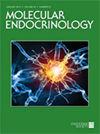Assignment of Functional Relevance to Genes at Type 2 Diabetes-Associated Loci Through Investigation of β-Cell Mass Deficits.
Q Biochemistry, Genetics and Molecular Biology
引用次数: 16
Abstract
Type 2 diabetes (T2D) has been associated with a large number of genomic loci, many of which encompass multiple genes without a definitive causal gene. This complexity has hindered efforts to clearly identify functional candidate genes and interpret their role in mediating susceptibility to disease. Here we examined the relevance of individual genes found at T2D-associated loci by assessing their potential contribution to a phenotype relevant to the disease state: production and maintenance of β-cell mass. Using transgenic zebrafish in which β-cell mass could be rapidly visualized in vivo, we systematically suppressed the expression of orthologs of genes found at T2D-associated genomic loci. Overall, we tested 67 orthologs, many of which had no known relevance to β-cell mass, at 62 human T2D-associated loci, including eight loci with multiple candidate genes. In total we identified 25 genes that were necessary for proper β-cell mass, providing functional evidence for their role in a physiological phenotype directly related to T2D. Of these, 16 had not previously been implicated in the regulation of β-cell mass. Strikingly, we identified single functional candidate genes at the majority of the loci for which multiple genes were analyzed. Further investigation into the contribution of the 25 genes to the adaptive capacity of β-cells suggested that the majority of genes were not required for glucose-induced expansion of β-cell mass but were significantly necessary for the regeneration of β-cells. These findings suggest that genetically programmed deficiencies in β-cell mass may be related to impaired maintenance. Finally, we investigated the relevance of our findings to human T2D onset in diabetic individuals from the Old Order Amish and found that risk alleles in β-cell mass genes were associated with significantly younger age of onset and lower body mass index. Taken together, our study offers a functional approach to assign relevance to genes at T2D-associated loci and offers experimental evidence for the defining role of β-cell mass maintenance in genetic susceptibility to T2D onset.通过β-细胞质量缺陷的研究发现2型糖尿病相关基因位点的功能相关性
2型糖尿病(T2D)与大量基因组位点相关,其中许多位点包含多个基因,但没有明确的致病基因。这种复杂性阻碍了明确识别功能候选基因并解释其在介导疾病易感性中的作用的努力。在这里,我们通过评估它们对与疾病状态相关的表型的潜在贡献,研究了在t2d相关位点发现的单个基因的相关性:β细胞质量的产生和维持。利用能够在体内快速观察β细胞团的转基因斑马鱼,我们系统地抑制了t2d相关基因组位点上同源基因的表达。总的来说,我们在62个人类t2d相关基因座上测试了67个同源基因,其中许多与β细胞质量没有已知的相关性,包括8个具有多个候选基因的基因座。总的来说,我们确定了25个基因是适当的β细胞质量所必需的,为它们在与T2D直接相关的生理表型中的作用提供了功能证据。其中,16个先前没有涉及β细胞质量的调节。引人注目的是,我们在分析多个基因的大多数位点上发现了单一功能的候选基因。对25个基因对β细胞适应能力的贡献的进一步研究表明,大多数基因对葡萄糖诱导的β细胞质量的扩大不是必需的,但对β细胞的再生是必要的。这些发现表明,β细胞群的基因程序性缺陷可能与维持受损有关。最后,我们研究了我们的发现与旧秩序阿米什人糖尿病个体T2D发病的相关性,发现β细胞质量基因中的风险等位基因与发病年龄明显较年轻和体重指数较低相关。综上所述,我们的研究提供了一种功能性方法来确定与T2D相关基因位点的相关性,并为β细胞质量维持在T2D发病遗传易感性中的决定性作用提供了实验证据。
本文章由计算机程序翻译,如有差异,请以英文原文为准。
求助全文
约1分钟内获得全文
求助全文
来源期刊

Molecular endocrinology
医学-内分泌学与代谢
CiteScore
3.49
自引率
0.00%
发文量
0
审稿时长
12 months
期刊介绍:
Molecular Endocrinology provides a forum for papers devoted to describing molecular mechanisms by which hormones and related compounds regulate function. It has quickly achieved a reputation as a high visibility journal with very rapid communication of cutting edge science: the average turnaround time is 28 days from manuscript receipt to first decision, and accepted manuscripts are published online within a week through Rapid Electronic Publication. In the 2008 Journal Citation Report, Molecular Endocrinology is ranked 16th out of 93 journals in the Endocrinology and Metabolism category, with an Impact Factor of 5.389.
 求助内容:
求助内容: 应助结果提醒方式:
应助结果提醒方式:


